Rispondi al commento
Untitled
L' "HOGMANAY", LA FESTA SCOZZESE DI CAPODANNO
SCOTLAND'S NEW YEAR'S EVE CELEBRATIONS, HOGMANAY
by naan e MarchRose
 Solo un paese al mondo può celebrare il Nuovo Anno, o Hogmanay, con tale passione : gli Scozzesi!! Ma quali sono le reali origini del Hogmanay, e perchè un alto, scuro straniero dovrebbe essere un visitatore benvenuto dopo la mezzanotte?
Solo un paese al mondo può celebrare il Nuovo Anno, o Hogmanay, con tale passione : gli Scozzesi!! Ma quali sono le reali origini del Hogmanay, e perchè un alto, scuro straniero dovrebbe essere un visitatore benvenuto dopo la mezzanotte?
Si pensa che molte delle celebrazioni tradizionali del Hogmanay siano state portate in Scozia dagli invasori Vichinghi nei secoli VIII e IX. Questi uomini chiamati Norsemen ( = uomini del nord ) perchè provenivano da latitudini ancora più a nord della Scozia, facevano particolare attenzione al sopraggiungere del Solstizio d'Inverno, o giorno più corto, ed erano intenzionati a celebrarlo con dei festeggiamenti speciali.
Nelle Shetland, dove l'influenza Vichinga è tuttora ancora molto forte, il Nuovo Anno è ancora chiamato Yules, dalla parola Scandinava usata per indicare la festa di mezzo inverno di Yule.
Può sorprendere molte persone il fatto che il Natale non fu celebrato in Scozia, praticamente venne proibito, per circa 400 anni, dalla fine del XVII sec. al 1950. La ragione è da ricercarsi negli anni della Riforma Protestante, quando il Natale fu proclamato come festa indetta dal Papa, o comunque cattolica, e quindi proibita.
 Per questo motivo, fino al 1950, molti Scozzesi lavoravano a Natale e festeggiavano il solstizio d'inverno col Nuovo Anno, durante una festa in cui la famiglia e gli amici si riunivano e si scambiavano regali, una festa conosciuta come Hogmanay.
Per questo motivo, fino al 1950, molti Scozzesi lavoravano a Natale e festeggiavano il solstizio d'inverno col Nuovo Anno, durante una festa in cui la famiglia e gli amici si riunivano e si scambiavano regali, una festa conosciuta come Hogmanay.
Ci sono molte tradizioni e superstizioni cui si dovrebbe porre attenzione prima della mezzanotte del 31 dicembre: e queste includono pulire la casa e portare fuori le ceneri dal focolare, occorre anche pagare tutti i propri debiti prima che le "campane" rintocchino la mezzanotte, il messaggio di queste tradizioni è infatti quello di ripulire tutte le faccende rimaste in sospeso del vecchio anno, e ripartire da zero per dare il benvenuto al giovane, Nuovo Anno.
Subito dopo mezzanotte è tradizione cantare "Auld Lang Syne" (Traduzione: I giorni trascorsi ) di Robert Burns, il quale pubblicò la sua versione nel 1788, benchè la canzone fosse già in circolazione da ottanta anni.
"Should auld acquaintance be forgot and never brought to mind?
Should auld acquaintance be forgot and auld lang syne
For auld lang syne, my dear, for auld lang syne,
We'll take a cup o kindness yet, for auld lang syne."
“Credi davvero che i vecchi amici si debbano dimenticare e mai ricordare?
Credi davvero che i vecchi amici e i giorni trascorsi insieme si debbano dimenticare?
Perche’ i giorni sono ormai trascorsi, mio caro, perche’ i giorni sono ormai trascorsi
Faremo un brindisi per ricordare con affetto i giorni ormai trascorsi.”
Una parte integrante della festa del Hogmanay, che viene celebrata con lo stesso entusiasmo anche al giorno d'oggi, è dare il benvenuto ad amici e sconosciuti con calda ospitalità e naturalmente con tanti baci per tutti.
Il "First footing" (il primo passo dentro la casa, ovvero la prima visita, dopo la mezzanotte) è ancora molto comune in Scozia. Per assicurare buona fortuna alla casa la prima visita, e quindi il primo passo, deve essere fatto da un uomo dai capelli scuri, il quale deve portare con sé alcuni oggetti simbolici, cioè pezzi di carbone, biscotti di pastafrolla (shortbread), sale, pane nero (black bun), e una piccola fiaschetta di whisky. L'uomo, nella tradizione, rappresenterebbe un ritorno al tempo dei Vichinghi, quando un grosso straniero biondo che arrivava sulla soglia di casa con una grande ascia significava guai e probabilmente un nuovo anno non molto felice.
 I fuochi artificiali e le fiaccolate che si svolgono in molte città della Scozia ricordano le feste pagane di quel tempo.
I fuochi artificiali e le fiaccolate che si svolgono in molte città della Scozia ricordano le feste pagane di quel tempo.
Nella cerimonia tradizionale del Nuovo Anno le persone si travestivano con delle pelli di bestiame e correvano per il villaggio mentre venivano colpite con dei bastoni. I festeggiamenti includevano anche dei falò ed il lancio di torce accese. Pelli di animali avvolte intorno a bastoni e incendiate producevano un fumo che si credeva fosse molto efficace per tener lontani gli spiriti cattivi: questo bastone che sprigionava fumo era conosciuto anche come un Hogmanay.
Molte di queste usanze continuano ai giorni nostri, specialmente nelle comunità più antiche delle Highlands e delle Isole Scozzesi. Sull’Isola di Lewis, delle Ebridi esterne, I giovani ed i ragazzi formano delle bande contrapposte: ognuno dei capi delle bande indossa una pelle di pecora, mentre un altro membro porta un sacco. Le bande si spostano attraverso il villaggio andando di casa in casa e recitando una poesia in gaelico. Ai ragazzi vengono dati dei bannocks ( focacce di frutta ) da mettere nel sacco, prima che si spostino alla casa successiva.
Una delle più spettacolari cerimonie del fuoco ha luogo a Stonehaven, a sud di Aberdeen, sulla costa nord-orientale. Delle enormi palle infuocate vengono fatte dondolare appese a lunghe aste metalliche, ognuna delle quali richiede diversi uomini per essere trasportata - su e giù per High Street, in parata. Anche in questo caso, si crede che l’origine dell’usanza sia collegata al Solstizio d’Inverno, quando le palle di fuoco significavano il potere del sole, che purifica il mondo distruggendo gli spiriti cattivi
Per chi visita la Scozia vale la pena di ricordare che anche il 2 gennaio è festa nazionale in Scozia, e questo giorno in più a stento basta per riprendersi da una settimana di baldoria scatenata. Tutto questo fa parte dell’eredità culturale di antichi costumi e tradizioni scozzesi che circonda la festa pagana di Hogmanay.


Only one nation in the world can celebrate the New Year or Hogmanay with such revelry and passion – the Scots! But what are the actual origins of Hogmanay, and why should a tall dark stranger be a welcome visitor after midnight?
It is believed that many of the traditional Hogmanay celebrations were originally brought to Scotland by the invading Vikings in the early 8th and 9th centuries. These Norsemen, or men from an even more northerly latitude than Scotland, paid particular attention to the arrival of the Winter Solstice or the shortest day, and fully intended to celebrate its passing with some serious partying.
In Shetland, where the Viking influence remains strongest, New Year is still called Yules, deriving from the Scandinavian word for the midwinter festival of Yule.
It may surprise many people to note that Christmas was not celebrated as a festival and virtually banned in Scotland for around 400 years, from the end of the 17th century to the 1950s. The reason for this dates back to the years of Protestant Reformation, when the straight-laced Kirk proclaimed Christmas as a Popish or Catholic feast, and as such needed banning.
 And so it was, right up until the 1950s that many Scots worked over Christmas and celebrated their winter solstice holiday at New Year when family and friends would gather for a party and to exchange presents which came to be known as hogmanays.
And so it was, right up until the 1950s that many Scots worked over Christmas and celebrated their winter solstice holiday at New Year when family and friends would gather for a party and to exchange presents which came to be known as hogmanays.
There are several traditions and superstitions that should be taken care of before midnight on the 31st December: these include cleaning the house and taking out the ashes from the fire, there is also the requirement to clear all your debts before "the bells" sound midnight, the underlying message being to clear out the remains of the old year, have a clean break and welcome in a young, New Year on a happy note.
Immediately after midnight it is traditional to sing Robert Burns' "Auld Lang Syne". Burns published his version of this popular little ditty in 1788, although the tune was in print over 80 years before this.
"Should auld acquaintance be forgot and never brought to mind?
Should auld acquaintance be forgot and auld lang syne
For auld lang syne, my dear, for auld lang syne,
We'll take a cup o kindness yet, for auld lang syne."
An integral part of the Hogmanay party, which is continued with equal enthusiasm today, is to welcome friends and strangers with warm hospitality and of course lots of enforced kissing for all.
"First footing" (or the "first foot" in the house after midnight) is still common across Scotland. To ensure good luck for the house the first foot should be a dark male, and he should bring with him symbolic pieces of coal, shortbread, salt, black bun and a wee dram of whisky. The dark male bit is believed to be a throwback to the Viking days, when a big blonde stranger arriving on your door step with a big axe meant big trouble, and probably not a very happy New Year!

The firework displays and torchlight processions now enjoyed throughout many cities in Scotland are reminders of the ancient pagan parties from those Viking days of long ago.
The traditional New Year ceremony would involve people dressing up in the hides of cattle and running around the village whilst being hit by sticks. The festivities would also include the lighting of bonfires and tossing torches. Animal hide wrapped around sticks and ignited produced a smoke that was believed to be very effective in warding off evil spirits: this smoking stick was also known as a Hogmanay.
Many of these customs continue today, especially in the older communities of the Highlands and Islands of Scotland. On the Isle of Lewis, in the Outer Hebrides, the young men and boys form themselves into opposing bands; the leader of each wears a sheep skin, while another member carries a sack. The bands move through the village from house to house reciting a Gaelic rhyme. The boys are given bannocks (fruit buns) for their sack before moving on to the next house.
One of the most spectacular fire ceremonies takes place in Stonehaven, south of Aberdeen on the north east coast. Giant fireballs are swung around on long metal poles each requiring many men to carry them as they are paraded up and down the High Street. Again the origin is believed to be linked to the Winter Solstice with the swinging fireballs signifying the power of the sun, purifying the world by consuming evil spirits.
For visitors to Scotland it is worth remembering that January 2nd is also a national holiday in Scotland, this extra day being barely enough time to recover from a week of intense revelry and merry-making. All of which helps to form part of Scotland's cultural legacy of ancient customs and traditions that surround the pagan festival of Hogmanay.

SCOTTISH BLACK BUN
Questa è la torta farcita tradizionale scozzese di capodanno. Ogni massaia ha la sua versione personale. Questa che vi presentiamo viene da un ricettario casalingo.
Preparazione
 Per prima cosa preparate circa mezzo chilo di impasto base per torte ( tipo pasta frolla ) secondo la vostra solita ricetta. Fate raffreddare.
Per prima cosa preparate circa mezzo chilo di impasto base per torte ( tipo pasta frolla ) secondo la vostra solita ricetta. Fate raffreddare.
Prendete uno stampo per torte di alluminio, se possibile apribile, e foderatelo di carta antiaderente. Mettetelo da parte.
Adesso mescolate:
1 cucchiaino da tè di cannella, 1 di zenzero grattuggiato, 1/4 noce moscata grattugiata, 1/2 cucchiaino di pepe bianco.
Mettete in una ciotola grande circa 300 grammi di farina e 1/2 cucchiaino di bicarbonato di soda, mescolate bene. Aggiungete 100 grammi di zucchero di canna tipo Demerara, poi le spezie, 400 grammi di zibibbo, 400 grammi di uvetta sultanina, 100 grammi di mandorle macinate oppure in scagliette, 100 grammi di scorzette di agrumi misti candite.
Mescolate tutto per bene.
Aggiungete 2 uova sbattute, 5 cucchiai di latticello (va bene anche il latte) & 2 o 3 cucchai di whisky. Mescolate fino a ottenere un impasto consistente.
Prendete 2/3 della pasta e foderateci lo stampo. Riempite con il miscuglio di frutta premendolo bene. Formate un coperchio con il resto della pasta, e ricoprite tutto nel modo consueto, inumidendone i bordi con acqua per farlo aderire.
Prendete uno spiedino di legno lungo, e forate la torta diverse volte a fondo, finchè sentirete il fondo della tortiera. Spennellate il coperchio con una miscela di uovo e latte, and e fate cuocere in forno preriscaldato a 170 gradi per circa 3 ore. Verificate la cottura con lo spiedino, quand’è cotto non ci deve essere sopra nessuna traccia dell’impasto.
Servite col caffè, o, come fanno gli scozzesi, con un bel bicchiere di whisky!
This cake in a crust is the traditional New Year cake in Scotland. Every housewife has her own variations. This one is from a family recipe book
Preparation
First make a 1lb weight of short crust pastry your usual method. Leave to chill.
Take a springform (if possible) cake tin, and line with baking parchment. Set aside.
Mix together
1teaspoon each of cinnamon, ground ginger, 1/4 fresh grated nutmeg, 1/2 teaspoon white pepper.
Weigh into large bowl 10oz plain flour and 1/2 teaspoon bicarbonate soda, mix well. Add 4oz Demerara sugar, then the spices, and weigh in 1lb currants, 1lb raisins, 4oz broken or flaked almonds, 4oz mixed candied peel.
Mix altogether well.
Add two beaten eggs, 5 tablespoons buttermilk (or milk will do) & two or three tablespoons whisky. Mix to a stiff sticky dough.
Roll out 2/3rds of the pastry and line the caketin with this. Press the fruit mixture into the pastry shell so that it is filled densely. Roll out the rest of the pastry to form a lid, and put on top in the usual way, moistening the edges with water to make then stick.
Take a long skewer, and pierce several times, right through the cake till you feel the tip touch the tin bottom. Brush the lid with a mixture of egg and milk, and bake in a pre-heated oven at 325 Fahrenheit; 170 Centigrade for about three hours. Test with skewer, when it is done, the skewer will not have any cake mix sticking to it.
Serve with coffee, or as the Scots do, with a wee dram of whisky!
SCOTTISH SHORTBREAD
Questa torta / biscotto è la versione moderna di una torta molto antica, il Bannock, che veniva preparato in onore del Sole. Oggi, si fanno dei segni che dividono il biscotto in fette triangolari, ma questi segni in origine simboleggiavano I raggi del sole. Bannock era l’antica parola che veniva usata per descrivere un impasto cotto in forno e di forma rotonda, e generalmente con una consistenza dura, più come quella dei biscotti che di una torta..
 Per questa ricetta dovete foderare un vassoio con carta da forno.
Per questa ricetta dovete foderare un vassoio con carta da forno.
Sbattete finché diventa spumoso 100 grammi di burro con 80 di zucchero semolato (molto fine). Aggiungete 200 grammi di farina & un pizzico di sale. Dovrebbe risultare un impasto consistente e duro, ma abbastanza cedevole da poter essere disteso con il mattarello. Se tende a sbriciolarsi, aggiungete qualche goccia di acqua gelata (dal frigorifero).
Stendente l’impasto col mattarello dino ad uno spessore di 3 millimetri circa. Qui io uso un trucchetto, lo stendo su un pezzo di carta da forno, e poi lo sollevo e lo metto nella teglia direttamente insieme alla carta. Si rompe molto facilmente! Usando un piatto piano, ritagliate l’impasto a forma di cerchio. Tirate via i rimasugli. Poi prendete un taglierino circolare e fate un buco al centro, ma non fino a perforarlo, solo quanto basta per stampargli sopra la forma di un cerchietto (o di un sole!). Disegnate otto “raggi” equidistanti, tutt’intorno al centro. Forate tre volte ogni fetta con una forchetta. Cuocete in forno preriscaldato a 180 gradi per circa 20 minuti. Quando lo tirerete fuori dal forno sarà ancora abbastanza soffice, ma raffreddandosi diventerà duro – come i biscotti.
This biscuit type cake is a modern version of a very ancient cake or Bannock, which was baked in honour of the Sun. Nowadays, we make marks which divide the biscuit into slices or wedges, but these marks originally were symbolic of the rays of the sun. Bannock was the old name which was used to describe a mix baked in a large flat round shape, and generally hardish like biscuit rather than cake texture.
For this recipe you need to line a baking tray with baking parchment.
Cream together 4oz butter, 3oz caster sugar (very fine). Mix in 8 oz flour & a pinch of salt. This should be a stiff dough, pliable enough to roll our like pastry. If too crumbly, add a tiny drop at a tine of ice cold water (from the fridge).
Roll out to 1/8 inch thick only. A tip here, I roll it out on a piece of baking parchment, and then lift it onto my baking tray complete with the parchment. It breaks very easily! Define a large circle by cutting around a dinner plate . Remove the bits. Then take a small circular cutter and cut away a centre hole, but not right through, just enough to get the indented shape of a circle (or a sun!). Make eight evenly spaced 'rays' or wedges around the cake. Pierce each wedge three times with a fork.. Bake in a pre heated oven at 350 Fahrenheit, 180 Centigrade for about 20 minutes. It will be softish when you take it out, but will harden as it cools - like cookies.
Secondo la tradizione scozzese, per avere un anno fortunato, il primo
visitatore dell'anno deve essere un uomo dai capelli scuri...
che ne direste di questo?
Dedicato a tutte voi dalle bloggers di Isn't It Romantic?
come augurio di Buona Fortuna per il 2010
According to scottish tradition, to get a lucky year, the first visitor on
new year's day must be a dark stranger...
what would you think of this for instance?
From all Isn't It Romantic? bloggers to their readers!
may this bring you good luck for 2010







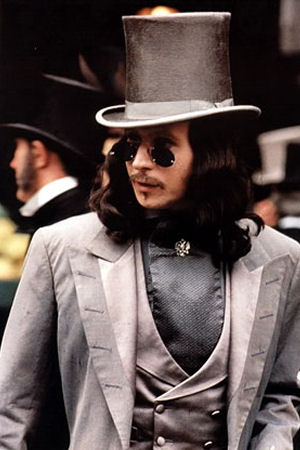

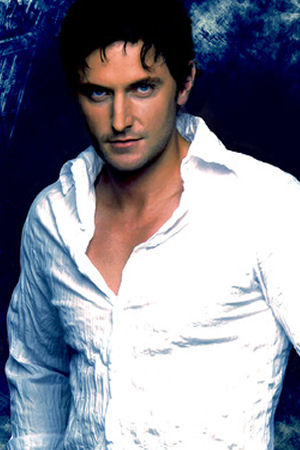
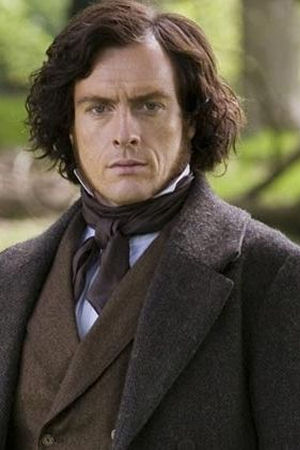
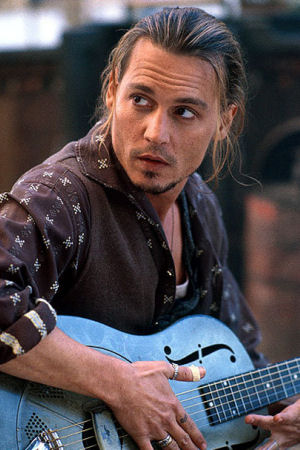


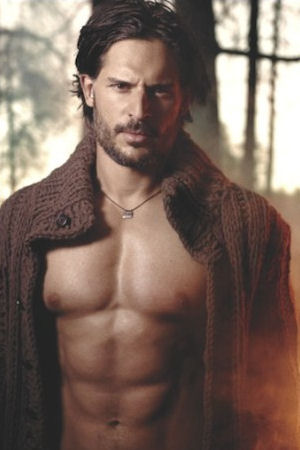
Commenti recenti
7 anni 2 settimane fa
7 anni 2 settimane fa
7 anni 2 settimane fa
7 anni 2 settimane fa
7 anni 2 settimane fa
7 anni 3 settimane fa
7 anni 3 settimane fa
7 anni 3 settimane fa
7 anni 3 settimane fa
7 anni 3 settimane fa